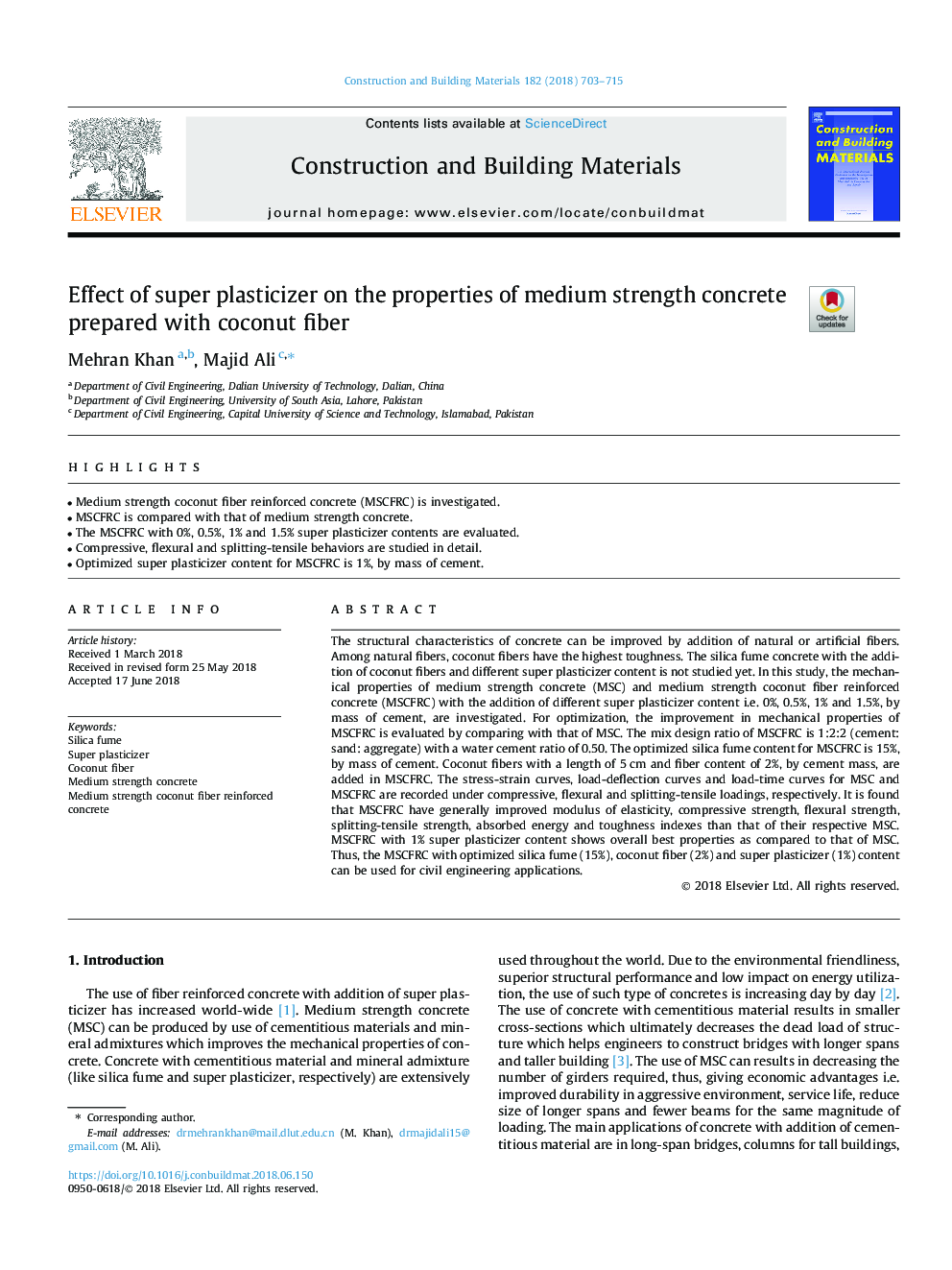| Article ID | Journal | Published Year | Pages | File Type |
|---|---|---|---|---|
| 6712361 | Construction and Building Materials | 2018 | 13 Pages |
Abstract
The structural characteristics of concrete can be improved by addition of natural or artificial fibers. Among natural fibers, coconut fibers have the highest toughness. The silica fume concrete with the addition of coconut fibers and different super plasticizer content is not studied yet. In this study, the mechanical properties of medium strength concrete (MSC) and medium strength coconut fiber reinforced concrete (MSCFRC) with the addition of different super plasticizer content i.e. 0%, 0.5%, 1% and 1.5%, by mass of cement, are investigated. For optimization, the improvement in mechanical properties of MSCFRC is evaluated by comparing with that of MSC. The mix design ratio of MSCFRC is 1:2:2 (cement: sand: aggregate) with a water cement ratio of 0.50. The optimized silica fume content for MSCFRC is 15%, by mass of cement. Coconut fibers with a length of 5â¯cm and fiber content of 2%, by cement mass, are added in MSCFRC. The stress-strain curves, load-deflection curves and load-time curves for MSC and MSCFRC are recorded under compressive, flexural and splitting-tensile loadings, respectively. It is found that MSCFRC have generally improved modulus of elasticity, compressive strength, flexural strength, splitting-tensile strength, absorbed energy and toughness indexes than that of their respective MSC. MSCFRC with 1% super plasticizer content shows overall best properties as compared to that of MSC. Thus, the MSCFRC with optimized silica fume (15%), coconut fiber (2%) and super plasticizer (1%) content can be used for civil engineering applications.
Related Topics
Physical Sciences and Engineering
Engineering
Civil and Structural Engineering
Authors
Mehran Khan, Majid Ali,
